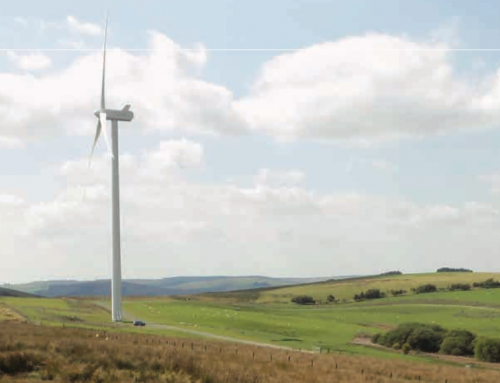In its annual report for 2018 The Renewables Infrastructure Group (TRIG) announced a profit before tax of £123 million (2017: £90m). Net Asset Value per share was estimated to have increased from 103.6 pence at the end of 2017 to 108.9p at the end of 2018. The total dividends declared per share were 6.5p share (2017: 6.4p) and are targeted to increase to 6.64p in 2019. The total return on investment was therefore 11.6 per cent, for an annualised return of 7.8 per cent since the IPO in 2013.
TRIG owns wholly or partially 33 onshore wind farms and 28 solar farms, mostly in the UK but with substantial capacity in France, French Dependencies, Ireland and Sweden. Five of these were added in 2018 including a major investment of £171.6 million in the Swedish Erstrask farm (this and some of the other additions were contracted for in 2018 but will only be operational in 2019).
Slightly surprisingly TRIG have an interest in only one UK offshore wind farm, Sheringham Shoal off Norfolk. This is because the company’s original investment policy put a limit of 20 per cent on investments that were not onshore wind or solar PV. The Board propose to remove this restriction in the near future.

www.trig-ltd.com
This mixture of wind and solar farms produced 2011 GWh of electricity in 2018. Two thirds of this was subsidised by Renewable Obligation Certificates (ROC), Feed-in Tariffs or fixed power purchase agreements giving an average revenue of £105.6 per MWh versus £92.4 in 2017. The increase was caused by higher power prices, and the addition of Sheringham Shoal, which produced £154/MWh thanks to its 2 ROCs/MWh for an offshore project. These factors overcame a lower than average wind power, partially compensated by higher than average solar insolation.
Such earnings are far above the average wholesale power price of £52 per MWh in the markets that TRIG serves, thanks to the subsidies, most of which will continue until around 2030.
In its report TRIG discusses different types of subsidy and states that “Investments in assets without subsidies offer scope for greater returns due to their greater exposure to wholesale power prices. Investment in assets with subsidy mechanisms which eliminate power price exposure for the duration of the subsidy (e.g. 15 year Feed-in Tariffs or Contracts for Difference) offer lower returns.” This is surprising especially as in evaluating future risks the company estimates that wholesale power prices will remain essentially flat over the next 20 years at around £52 per MWh (without inflation).
It seems that TRIG expects the falling cost of new wind and solar projects to more than compensate for the removal of subsidies. The company also expects to gain from good management of its farms and good handling of the power market. It has certainly put its opinion into practice as its large Swedish investment is almost entirely without subsidy.
The evaluation of Net Asset Value is sensitive to power price forecasts (the only more sensitive factors are wind speed and solar insolation). TRIG’s long-term power price forecasts have been steadily decreasing over the last few years. They are heavily influenced by expected gas prices but are also net of power purchase agreement discounts and “cannibalisation” – the term used to describe the depressive effect on wholesale prices at times of high output from intermittent sources (for example at mid-day in California there is little value in offering power from a new solar source as there is more than enough already from existing solar and base load sources). TRIG’s price forecasts suggest that they think this effect is small. Others[1]are forecasting that onshore wind revenue from the wholesale market might drop by a third from 2018 to 2031.
One solution is to add storage. In 2017 TRIG bought a 20 MW battery for grid balancing. Disappointingly nothing was added in 2018 and at the end of the year the project was still running trials “… to identify viable “traded” business models….to profit from spreads and volatility in the wholesale and balancing energy markets.”
In the next few years TRIG’s solid income from subsidised projects and its geographic and technological diversification should ensure profitable results. The share price stands at 116p for a market capitalisation of £1524m.
[1]“Wholesale Power Price Cannibalisation” by Cornish Insight


